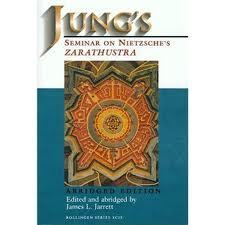A Psychological Look at Spirit (Part 1)
“Ye know only the sparks of the spirit: but ye do not see the anvil which it is, and the cruelty of its hammer” (Lecture VI, 9 June 1937).
The passage can be thought of as an image that shows the effect of man upon nature: Nietzsche’s “sparks” represented as an analogy to the dynamic power of friction which can start a fire.
Jung in his commentary generates a complex imaginal scene to speak about the psychological aspects of "spirit.“ Taking the image like one might interpret a dream:
The unseen players of the scene:
1. The mother anvil (inferred as the receiver of the blows of the hammer) which Jung later calls "yin”.
2. The father of the hammer which Jung later calls “yang”
The first two I have anthropomorphized but one can just as easily, as Jung has done, call them yin and yang respectively, or two truths that are the opposite and both equally valid.
3. The agent, the one who gives power to the hammer. This is the complex image of the dynamism of spirit
The action of the scene:
The work of the hammer upon the anvil transfers materially into the work of shaping the metal.
Psychological understanding:
The dynamism of action is “spirit” and it generates conflict (the fire that the “sparks” of the hammer striking the anvil") or potential conflict. This is the forever-present conflict between feminine and masculine, passive and active, receiving and acting, etc. (yin and yang) that is present and only part of an understanding of the psychological aspects of the scene.
The other part – or one part of many parts of this understanding – is also the “truth” of the “spirit”. That is, in simplified form, the “truth” of the the feminine principle (eros) and the masculine principle (logos). These two can be seen as the underlying archetypal basis of the, at times, conflictual relationship between man and woman in real life.
via Tumblr http://bit.ly/2DtTFY8
 RSS Feed
RSS Feed
